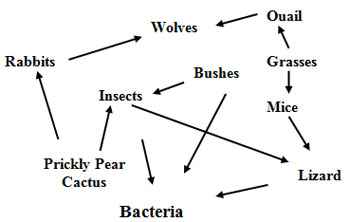Which organelle does a plant cell contain that animal cell does not?
a. mitochondria
b. chloroplast
c. cell membrane
d. ribosomes
B. Chloroplast
Extra 50 points: What process do chloroplast carry out?
Which of the following are a part of the circulatory system?
Extra 50 points: What do arteries do?
How many parents are involved in asexual reproduction?
A. one
B. two
C. three
A. one
What is a change in the DNA of a gene or chromosome?
The best definition of a fossil is ...
A. an old rock.
Organelles are structures within the cell that perform important functions. Which of the following correctly matches the organelle with its relationship to the whole cell?
Extra 50 points: What is this process called?
What is the function of the excretory system?
Extra 50 points: What is the other name for the excretory system?
Which type of reproduction creates variation that helps a species survive? (Check all that apply.)
Use the Punnett square below to answer the question below.
Possible offspring of two people who are heterozygous for earlobe attachment are shown. What is the probability of having a child who has attached earlobes
Identify the animal in this food web that obtains nutrients directly from producers.
This is a simplified diagram of a cell in a multi-cellular organism.

What is a characteristic of this cell?
Which of the following is a part of the digestive system?
Extra 50 points: Name two other organs in the digestive system
Which of the following correctly explains why the flowers are so brightly colored?
Two tall pea plants are crossed and their seeds are planted in a sunny spot in the garden. They received the same amount of water, are exposed to the same temperatures and soil conditions. At the end of the growing season you notice that 75% of the plants are tall and 25% of the plants are short. Which of the following best explains these results?
Food Web

Which of the following populations begins the flow of energy through this food web?
Which organelle carries out cellular respiration?
You’ve just eaten lunch. What path does food take through your digestive system?
Which is an advantage of sexual reproduction?
In the cells of most organisms, genetic information is contained in the:
Observe the characteristic facial features of the Galapagos Island finches below:
Which statement is most likely true about the Galapagos Island finches?
If you notice that the plant has a cell wall, that means it is a...
a. plant cell
b. animal cell
a. plant cell
Which body system are the lungs apart of?
A. Digestive
B. Muscular
C. Circulatory
D. Respiratory
D. Respiratory
Genes are....
A. coiled strands of DNA
B. sections of DNA
C. changes in DNA
B. sections of DNA
Which of the following is NOT a phenotype?
A. Brown hair
B. Curly hair
C. Green eyes
Changes in DNA are known as mutations and can sometimes produce beneficial changes in populations. A mutant form of the normally light-colored peppered moth is dark-colored. The dark-colored moth blends in with soot-covered trees in heavily polluted areas. Why would the dark-colored mutation be beneficial in a polluted area?
B. They cannot be seen as well by predators.

